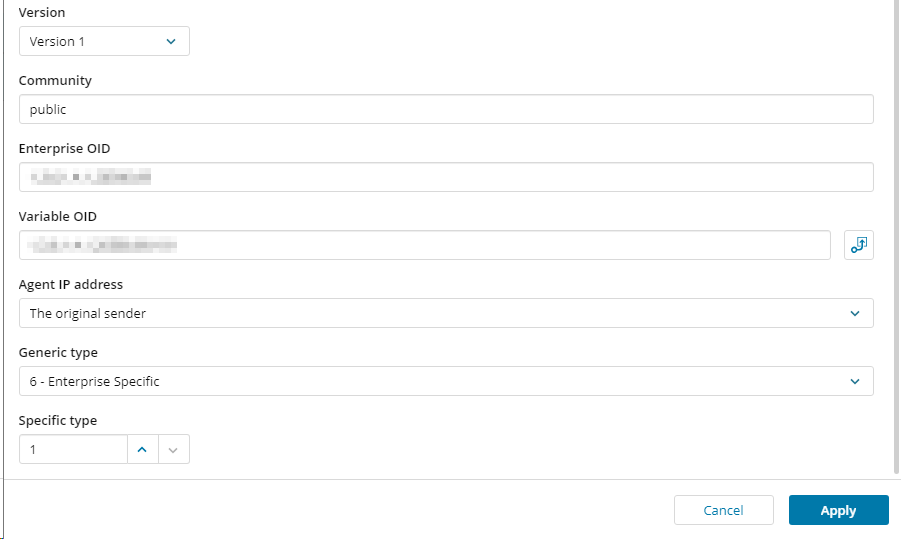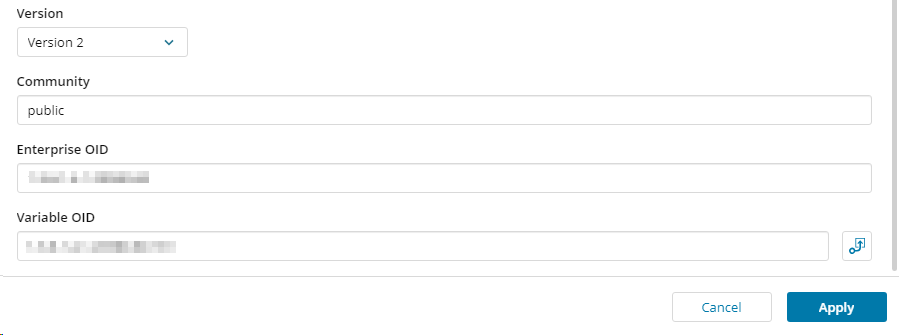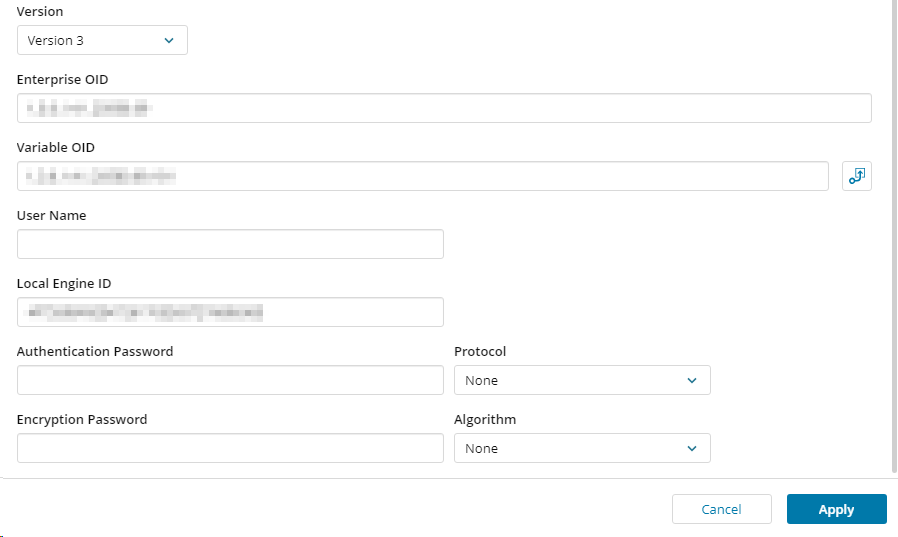Add an action to send an SNMP trap
You can add an action to send an SNMP trap to the specified host.
- From the Kiwi Syslog NG navigation bar, choose Setup > Rules.
- Locate an existing rule. If the rule does not exist, add a rule and start the New Rule wizard.
- If you are adding an action to an existing rule, select the rule and click Edit. If you are creating a new rule, navigate to the Actions step of the New Rule wizard.
- Click Add Action. Define the action name in the provided field.
- In the Action drop down, select Send SNMP trap.
-
Specify the following options.
Destination host Enter the IP address of the system receiving the SNMP trap.
IPv6 Select
IPv6next to the Destination host field to send SNMP and IPv6 trap messages to an IPv6 destination host address.Remote port Enter the port to which the SNMP trap is sent. The default port is 162.
If you change this setting, you must configure the receiving device to listen for SNMP traps on the same port number.
Message text Enter the content of the SNMP trap to be forwarded. Click  to insert content using variables.
to insert content using variables. - Select the version used to send SNMP traps to another syslog server.
- If you select version 1, specify the following options.
- 0 - Cold Start
- 1 - Warm Start
- 2 - Link Down
- 3 - Link Up
- 4 - Authentication Failure
- 5 - EGP Neighbor Loss
- 6 - Enterprise Specific
- If you select version 2, specify the Community, Enterprise OID, and Variable OID options.
- If you select version 3, specify the Enterprise OID and Variable OID options, as well as the following additional options.
Community This is like a password that is included in the trap message. Normally this is set to values such as "public", "private" or "monitor". Enterprise OID Enter a dotted numerical value (
1.3.6.1.x.x.x.x) that represents the MIB enterprise of the SNMP trap.If the Generic Type is set to 6, it indicates an Enterprise type trap. In this case the Specific Trap value needs to be considered.
Variable OID Specify a dotted decimal value ( 1.3.6.1.x.x.x.x) that represents the MIB variable of version 2 SNMP traps.Agent IP address Enter the IP address that appears as the source of the SNMP trap. By default this is set to "The original sender" but can be set to "From this machine", that is, the address of the machine running the Kiwi Syslog Server.
Generic type Select the type of trap to be sent:
Specific type This is a value that indicates the condition that caused the trap to be sent. See the example below.

In version 2 traps, the Enterprise OID value is bound as the second variable in the message text.
Additionally, the Specific type condition is unique to the MIB defined for the particular device sending the trap or syslog message.
See the example below.

User Name Specify the user name of the destination host. Local Engine ID Specify the local engine ID of the destination host. Authentication Password and Protocol Enter the authentication password and its respective protocol. Encryption Password and Algorithm Enter the encryption password and its respective algorithm. See the example below.

- If you are adding an action to an existing rule, click Apply. If you are creating an action in the New Rule wizard, click Add.
